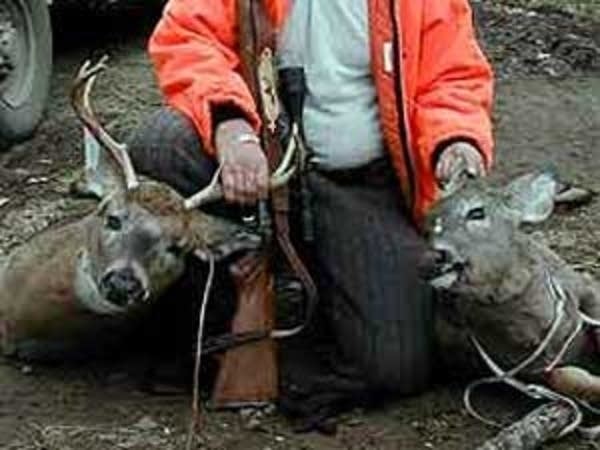Chronic wasting disease in deer an 'isolated incident,' DNR says
Go Deeper.
Create an account or log in to save stories.
Like this?
Thanks for liking this story! We have added it to a list of your favorite stories.

The Minnesota Department of Natural Resources has identified the first case of chronic wasting disease in the state's wild whitetail deer population.
A single wild whitetail deer shot this fall near Pine Island tested positive for the disease, DNR Commissioner Tom Landwehr said. Chronic wasting disease, which attacks the brain tissues, eventually kills the animal.
"We've tested over 30,000 deer," Landwehr said. "The first time we've ever found it was in about 500 samples taken in this area this year. So at this time we believe it's a very isolated incident."
State officials say the discovery will prompt a series of measures to keep the disease from spreading through the wild deer herd.
Turn Up Your Support
MPR News helps you turn down the noise and build shared understanding. Turn up your support for this public resource and keep trusted journalism accessible to all.
The DNR has been testing for chronic wasting disease in deer since 2002 when the disease first showed up in farm raised elk near Aitkin.
In the past eight years, elk on four farms tested positive for chronic wasting disease.
The infected deer was shot about 3 miles from an elk farm shut down in 2009 when the disease was found in the herd. The farm was quarantined and about 700 elk were killed.
The site is about 50 miles from Wisconsin. Chronic wasting disease is widespread among the whitetail deer population in the southwest part of that state.
There's no way to know for sure if the wild deer infection spread from the elk farm, said Paul Anderson, assistant director of the Minnesota Board of Animal Health. He said infectious proteins called prions can remain viable in soil for up to two years or longer.
Anderson said the elk farm is fenced to prevent white tail deer from getting into the area, but deer have gone past the tall fencing over the past two years, including this winter. Anderson said he believes all of those deer were killed.
DNR big game coordinator Lou Cornicelli, who is leading the chronic wasting disease response team, said the first step is to count the deer population in the area. Then the department will kill and test a number of deer in the affected area.
The DNR is also placing an emergency ban on feeding deer in the area around Pine Island. Cornicelli said it will take several of weeks to know more about the extent of the infection.
"There's a couple of ways to look at it," Cornicelli said. "Has the infection been there for a long time, therefore more of the population is infected? Or is the infection more recent and only a few animals are infected?"
Cornicelli said the disease is a long-range management issue. He said if the DNR doesn't try to eradicate the disease, over decades it can significantly reduce the deer population.
Officials hope only a small number of deer are infected and that the disease can be eradicated by killing all of the deer in a small area, he said.
State health officials say there is no evidence the disease spreads to humans, but they recommend hunters wear gloves when field dressing deer, and not eat meat from any deer that are thin or appear ill.
DNR Fish and Wildlife Division acting director Ed Boggess said the state will be aggressive in trying to protect the wild whitetail deer herd.
"We have nearly half a million deer hunters in the state harvesting consistently 200,000 deer a year," Boggess said. "Deer hunters are contributing in direct expenditures a quarter of billion dollars annually to the economy. So we're doing everything we can to maintain a healthy deer herd."
It will be several weeks before the DNR knows for sure if this is an isolated case of chronic wasting disease, or a much greater threat to the state's white tail deer population.
Dear reader,
Political debates with family or friends can get heated. But what if there was a way to handle them better?
You can learn how to have civil political conversations with our new e-book!
Download our free e-book, Talking Sense: Have Hard Political Conversations, Better, and learn how to talk without the tension.




